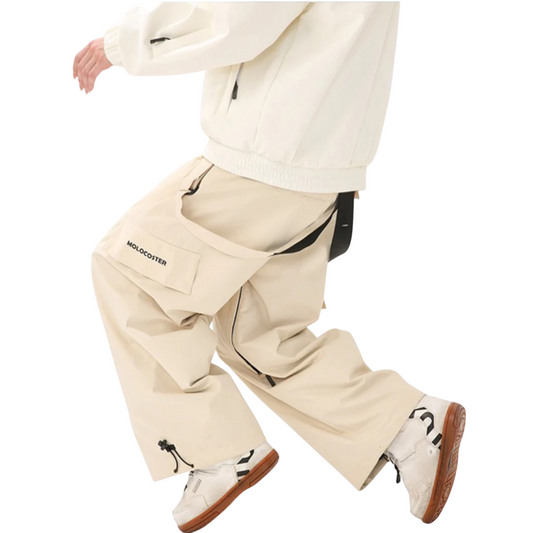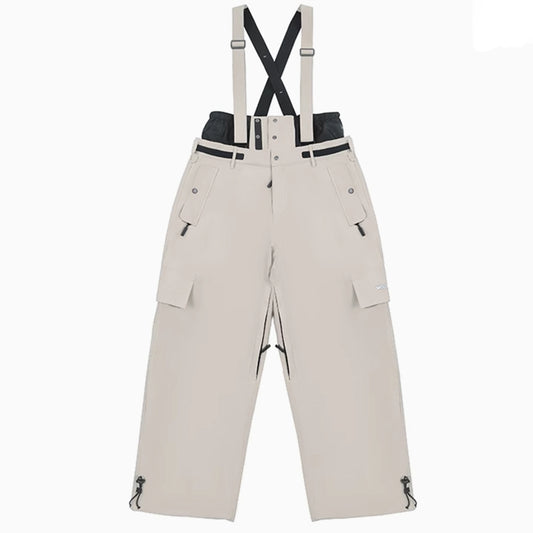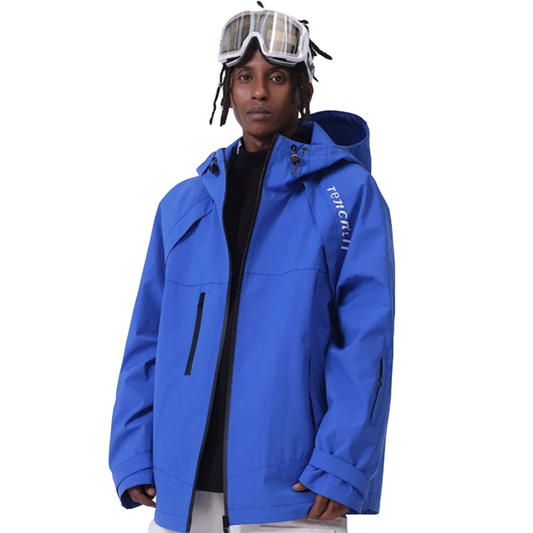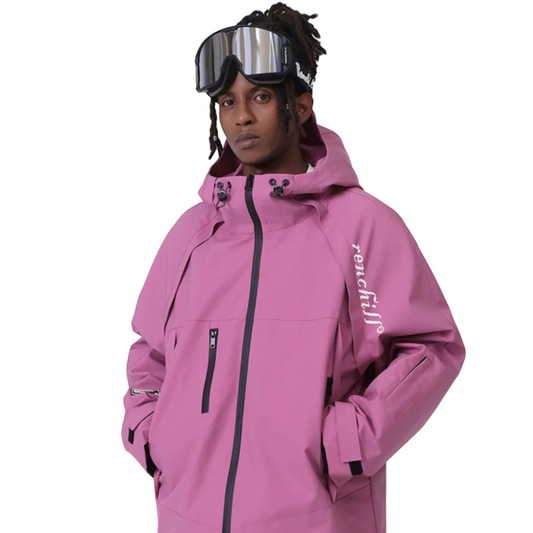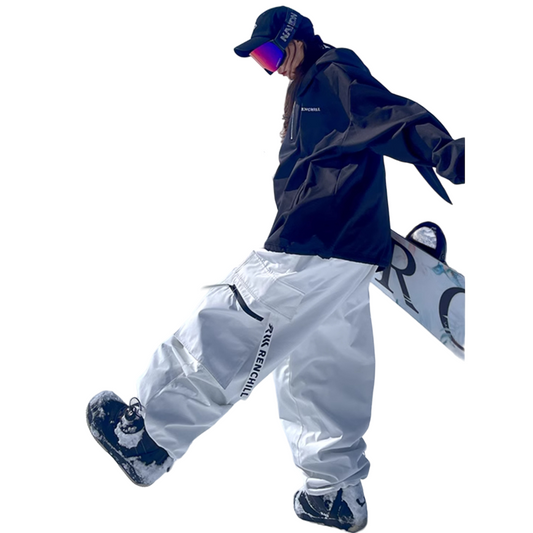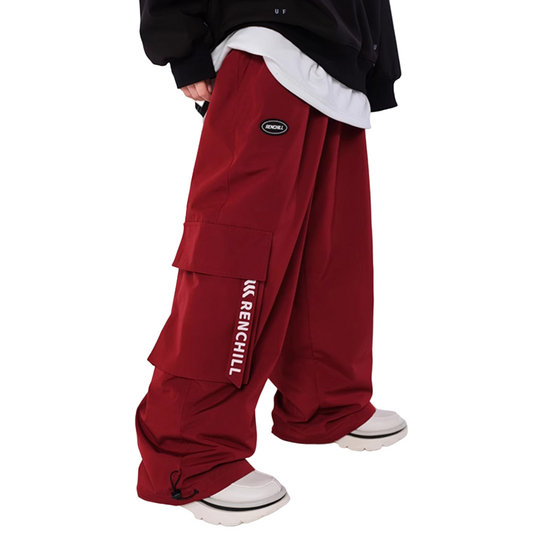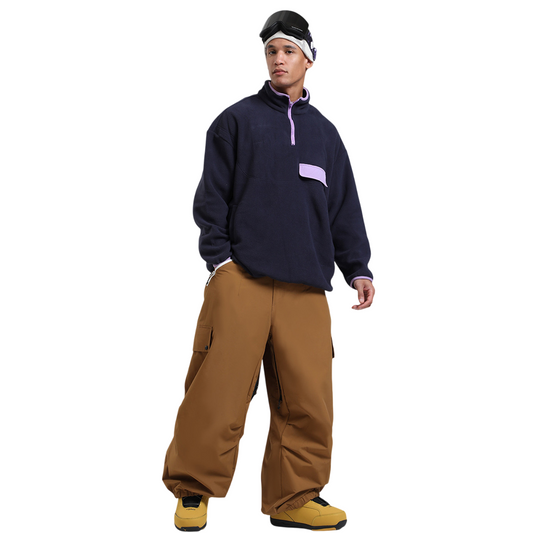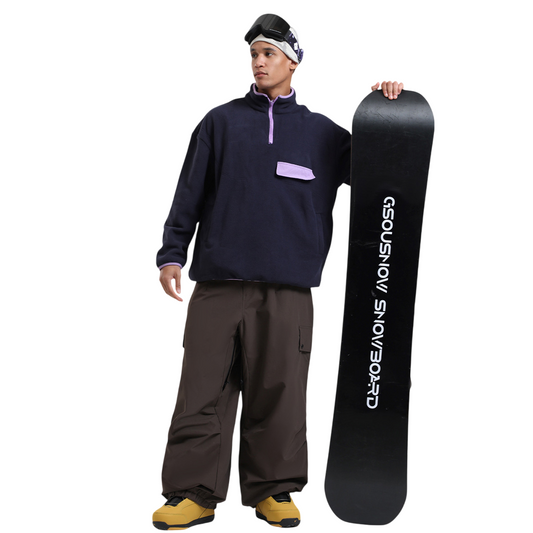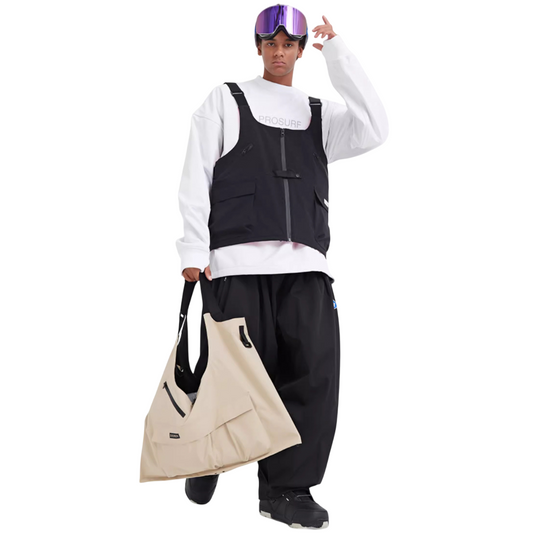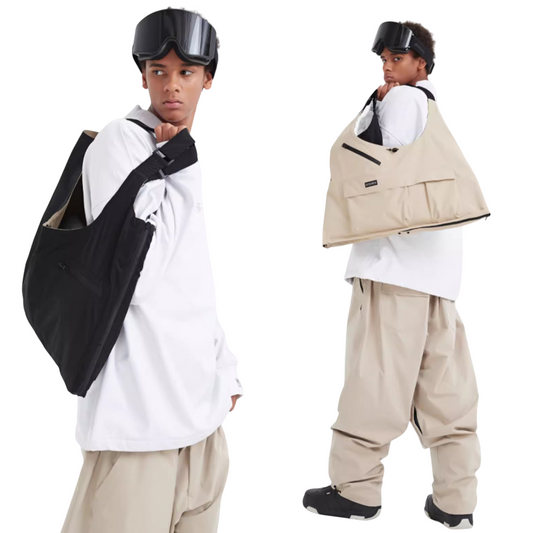When skiing in the backcountry, the right gear matters. Waterproof snowsuits for women and men help you stay dry and ski better downhill. They also make uphill climbing easier while keeping you comfortable. A high-quality ski jacket or snowsuit protects you and allows for free movement, ensuring you can fully enjoy your adventure.
Key Takeaways
- Pick a ski shell that keeps water out to stay dry. Check for waterproof coatings and strong materials that last.
- Make sure your ski shell lets air flow to stay comfy. This helps sweat leave your body and keeps you cool while hiking.
- Think about how the ski shell fits and its weight. A light shell is easier to move in, and a good fit feels better for long skiing trips.
Why a Ski Shell Matters
Protection from Extreme Weather
Weather in the backcountry can change very quickly. A ski shell protects you from snow, wind, and cold temperatures. Most ski shells are waterproof because of a special coating called DWR. Expensive ones, like the Arc'teryx Sabre, have 3-layer designs. These combine a strong outer layer with a waterproof middle layer to keep you dry and comfy.
If you're saving money, 2-layer ski shells are a good choice. They often have a mesh lining for extra comfort. No matter which one you pick, ski shells help control your body heat. Studies show outer layers can improve warmth by 40% when you're not moving. This means you'll stay cozy while waiting or enjoying the view.
Enhancing Comfort and Mobility
A ski shell does more than protect—it helps you move easily. Backcountry skiing involves climbing, twisting, and turning, so lightweight gear is important. Modern ski shells use light materials that reduce bulk, making movement easier.
Breathability is also important. When climbing, your body gets hot and sweaty. A breathable ski shell lets sweat escape, so you stay dry. Some newer ski shells have air-permeable designs for better airflow. This keeps you cool during tough climbs, so you can focus on skiing.
Layering for Backcountry Conditions
Layering is key to staying warm, and a ski shell is the top layer. It blocks wind and snow while working with inner layers to keep you warm. For example, wearing a ski shell with a synthetic jacket adds warmth without trapping sweat.
New ski shells use stretchy fabrics that move with your body. This makes them more comfortable than older, stiff jackets. Stretchy materials also fit better when layering, so you can move freely.
When skiing downhill, a ski shell blocks cold wind to keep you warm. On the uphill, its breathable design stops you from overheating. This balance makes it a must-have for backcountry adventures.
Key Features of a Ski Shell
Durability for Rugged Terrain
Backcountry skiing needs tough gear that lasts. A strong ski shell handles branches, rocks, and bad weather. Jackets like the Arc'teryx Sabre are made to resist wind and heavy snow. They also dry fast, so wet gear won’t slow you down.
Durable jackets survive more than one trip. Look for reinforced seams and tough fabrics. These features stop your jacket from ripping or wearing out on rough trails.
Lightweight Design for Easy Movement
Light ski shells help you move better on steep slopes. Heavy jackets can feel tight, but lighter ones let you turn easily. This is important for tricky terrain and sharp maneuvers. Whether you're new or experienced, lighter jackets keep you focused.
Modern ski shells use special materials to stay light and strong. They’re great for uphill climbs where weight matters. These jackets also fold small, making them easy to carry.
Breathability for Intense Activity
Skiing works your body hard, so breathable gear is important. Breathable jackets let sweat escape, keeping you dry and comfy. For tough climbs, pick jackets with high breathability ratings. These are made for active backcountry skiing.
New designs like H2Flow™ use vents and air channels to cool you down. They help you stay cool climbing uphill and warm skiing downhill. These features keep you comfortable no matter how hard you ski.
Fit for Maximum Comfort
A good fit makes skiing more enjoyable. Jackets should fit snugly but allow movement. Stretchy fabrics help the jacket move with your body.
Comfort also depends on how the jacket feels during long use. Some jackets spread pressure evenly to avoid pinching or rubbing. When trying one on, check how it feels on your shoulders and arms. A well-fitted jacket keeps you comfy all day.
Types of Ski Shells
Lightweight Shells for Minimalists
If you like simple gear, lightweight ski shells are great. These jackets are easy to carry and perfect for short trips. They work well in mild weather and keep you protected.
Lightweight shells are very light, often under a pound. This makes climbing uphill easier. They fit in backpacks without taking up much space. But they’re not made for heavy snow or freezing temperatures.
Here’s a quick look at two popular lightweight shells:
|
Product Name |
Weight |
Key Features |
Pros |
Cons |
|---|---|---|---|---|
|
Black Diamond Alpine Start Hoody |
6.9 oz |
Wind protection, light rain |
Compact, easy to carry |
Limited weather resistance |
|
Arc'teryx Gamma Lightweight Hoody |
8.60 oz |
Abrasion resistance, mobility |
Great comfort, flexibility |
Expensive, not for heavy rain |
These jackets are best for skiers who want easy movement and light gear.
Midweight Shells for Versatility
Midweight shells are a mix of light and tough. They work well in many backcountry conditions. These jackets protect you without being too heavy.
They’re great for skiers who need one jacket for different weather. Midweight shells are breathable and strong. Many have vents to keep you cool during hard climbs. They’re a good choice for changing conditions.
Heavy-Duty Shells for Harsh Conditions
For bad weather, heavy-duty shells are the best. These jackets handle heavy snow, strong winds, and cold. They’re made for tough skiing in rough places.
Heavy-duty shells use strong materials like Gore-Tex to stay waterproof and durable. For example:
- The Verbier jacket and bib are great for extreme weather, keeping you safe in tough backcountry trips.
- The 50-denier Paclite Gore-Tex shell is strong and waterproof, better than lighter fabrics in bad weather.
- Tested in harsh conditions (-8°C to -12°C, high humidity, and winds up to 100 km/h), these jackets protect you from cold, wind, and snow.
If you’re skiing in rough terrain, heavy-duty shells are the top choice.
SNOWMOCACA Snow Suit: A Flexible Choice
Features of the SNOWMOCACA Snow Suit
The SNOWMOCACA Snow Suit has many useful features. It’s made for both men and women, ensuring a great fit for all. The suit is completely waterproof, keeping you dry in heavy snow or rain. Its windproof fabric blocks cold winds, keeping you warm and cozy in bad weather.
The breathable material stops you from overheating on uphill climbs. Reinforced seams make it strong, so it lasts through tough backcountry trips. It also has adjustable cuffs, a hood that fits helmets, and several pockets for convenience and performance.
Why It’s Great for Backcountry Skiing
Backcountry skiing needs gear that handles rough conditions, and this suit does it well. Its lightweight design helps you move easily, whether climbing or skiing downhill. The waterproof fabric keeps you dry, and the windproof material protects you from icy winds.
This suit layers well over base clothes without feeling bulky. The breathable fabric keeps you cool during hard climbs, and its tough build resists branches and rocks. If you want dependable gear for backcountry skiing, this suit is a great choice.
FREE SHIPPING on Orders Over $99
Here’s a bonus: SNOWMOCACA offers free shipping for orders over $99. This makes it easier to get your snowsuit without extra costs.
Fun fact: Over 80% of people prefer free shipping when shopping online. High delivery fees annoy 54% of adults worldwide. Free shipping isn’t just nice—it improves your shopping experience.
With SNOWMOCACA’s free shipping, you can focus on your next adventure without spending too much.
Best Hardshell Jackets and Brands
Top Brands for Ski Shells
There are many great hardshell jackets to choose from. Some brands are known for being tough, comfy, and great in bad weather. Here are some top picks:
- Patagonia Triolet: This jacket keeps you dry and feels good to wear. It’s perfect for outdoor adventures.
- M10 Storm: If you like simple gear, this lightweight jacket is for you. It protects well and works for climbing.
- Norrona Trollveggen Gore-Tex Pro Light: Made with strong Gore-Tex fabric, this jacket lasts in rough weather.
- Mammut Nordwand Advanced: Its special DWR coating keeps water out, even in wet places.
- Arc'teryx Alpha SV: Built for extreme weather, this jacket uses Gore-Tex Pro for top protection.
Hardshell jackets come in three types: alpine, all-around, and minimalist. Alpine jackets handle the worst weather. All-around jackets work for many activities. Minimalist jackets are light and easy to carry, great for short trips.
How SNOWMOCACA Compares to Competitors
SNOWMOCACA is different from other hardshell brands. It’s versatile and performs well without being too expensive. The snow suit is fully waterproof, keeping you dry in rain or snow. Its breathable fabric keeps you cool during hard climbs. The windproof material blocks cold air, keeping you warm.
Compared to pricier jackets like the Arc'teryx Alpha SV or Norrona Trollveggen, SNOWMOCACA offers similar toughness and weather protection. It’s great for backcountry skiing and other outdoor fun. Features like adjustable cuffs, a helmet-friendly hood, and strong seams make it perfect for rough trails.
If you want a dependable hardshell that’s affordable, try SNOWMOCACA. Plus, orders over $99 get free shipping. That’s a nice perk for your next adventure!
Picking the right ski shell is super important for backcountry skiing. Strong jackets can handle rough trails, while light ones help you move easily. Breathable designs keep you comfy during hard climbs.
Here’s a simple comparison of popular ski shells:
|
Ski Shell Model |
Durability Level |
Weight |
Breathability |
|---|---|---|---|
|
Mammut Eiger Free Pro HS |
High |
Heavy |
High |
|
Flylow Lab |
Medium |
Medium |
Medium |
|
Flylow Kane |
Low |
Lightweight |
Medium |
|
Norrøna Lyngen Gore-Tex |
Low |
Lightweight |
Medium |
Lightweight jackets like the Flylow Kane and Norrøna Lyngen are great for steep climbs and quick turns. They’re easy to carry and feel good to wear, making them perfect for backcountry trips.
For a tough and flexible choice, try the SNOWMOCACA Snow Suit. It’s waterproof, breathable, and made for rough weather. Plus, orders over $99 come with free shipping. Don’t wait—get ready for your next adventure now!
FAQ
What’s the difference between a ski shell and a winter jacket?
A ski shell is lighter and breathes better. It’s made for layering and active sports like backcountry skiing. Winter jackets are heavier and less flexible.
Can I use a ski shell for other activities?
Yes, you can! Ski shells are great for hiking, climbing, and camping. They are tough and let air flow, making them perfect for outdoor adventures.
How do I pick the right ski shell for backcountry skiing?
Look for one that’s strong, breathable, and fits well. Light ones help with climbing, and waterproof ones keep you dry in bad weather.






